-
 Bitcoin
Bitcoin $117900
0.31% -
 Ethereum
Ethereum $3766
0.28% -
 XRP
XRP $3.176
-0.31% -
 Tether USDt
Tether USDt $1.000
0.00% -
 BNB
BNB $795.6
1.51% -
 Solana
Solana $186.8
-1.09% -
 USDC
USDC $0.9999
-0.01% -
 Dogecoin
Dogecoin $0.2353
-1.33% -
 TRON
TRON $0.3226
1.49% -
 Cardano
Cardano $0.8172
-1.08% -
 Sui
Sui $4.178
3.06% -
 Hyperliquid
Hyperliquid $43.05
-3.39% -
 Stellar
Stellar $0.4367
-0.57% -
 Chainlink
Chainlink $18.62
1.47% -
 Hedera
Hedera $0.2828
6.63% -
 Bitcoin Cash
Bitcoin Cash $584.7
5.65% -
 Avalanche
Avalanche $24.81
2.53% -
 Litecoin
Litecoin $112.8
-0.88% -
 UNUS SED LEO
UNUS SED LEO $8.975
-0.08% -
 Shiba Inu
Shiba Inu $0.00001395
-1.07% -
 Toncoin
Toncoin $3.285
-1.05% -
 Ethena USDe
Ethena USDe $1.001
0.01% -
 Polkadot
Polkadot $4.123
0.76% -
 Uniswap
Uniswap $10.49
-0.18% -
 Monero
Monero $326.5
0.14% -
 Dai
Dai $0.9999
-0.02% -
 Bitget Token
Bitget Token $4.576
0.34% -
 Pepe
Pepe $0.00001247
-1.55% -
 Cronos
Cronos $0.1400
3.77% -
 Aave
Aave $295.1
-0.73%
What is USDT? How is it different from other cryptocurrencies?
USDT, a stablecoin pegged to the US dollar, offers price stability for crypto trading, unlike volatile assets like Bitcoin. Issued by Tether Limited, it operates on multiple blockchains, providing flexibility but facing scrutiny over its reserve transparency.
Mar 10, 2025 at 03:20 pm
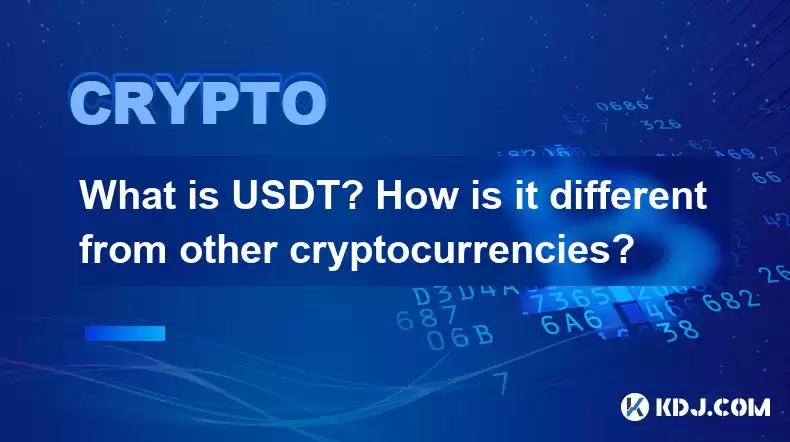
Key Points:
- USDT, or Tether, is a stablecoin pegged to the US dollar. This means its value is intended to remain relatively stable at $1.
- Unlike volatile cryptocurrencies like Bitcoin or Ethereum, USDT aims for price stability, making it useful for trading and minimizing risk associated with price fluctuations.
- USDT is issued by Tether Limited and operates on various blockchains, including Ethereum, Tron, and Solana. This offers users flexibility in choosing their preferred network.
- Differences from other cryptocurrencies lie primarily in its price stability mechanism and its intended use case as a medium of exchange rather than a speculative investment.
- The underlying collateral backing USDT and its auditing practices are subject to ongoing debate and scrutiny within the cryptocurrency community.
What is USDT?
USDT, short for Tether, is a cryptocurrency designed to maintain a stable value pegged to the US dollar. This means that one USDT is theoretically always worth one US dollar. Unlike Bitcoin or Ethereum, whose prices fluctuate dramatically, USDT aims for price stability, making it a popular choice for traders who want to minimize exposure to cryptocurrency market volatility. This stability is achieved through Tether Limited's claim to hold reserves equivalent to the number of USDT in circulation.
How is USDT different from other cryptocurrencies?
The primary difference between USDT and other cryptocurrencies lies in its intended purpose and price stability. Most cryptocurrencies are designed as speculative assets, with their value determined by market forces of supply and demand. Their prices can fluctuate wildly within short periods. USDT, on the other hand, is designed to act as a stable, reliable alternative to fiat currency within the cryptocurrency ecosystem. This makes it useful for trading, reducing the risk of significant losses due to price swings. It serves as a bridge between the volatile world of crypto and the relatively stable world of traditional finance.
How is USDT issued and managed?
USDT is issued by Tether Limited, a company based in the British Virgin Islands. The company claims to hold reserves of US dollars and other assets equivalent to the number of USDT in circulation, backing the 1:1 peg. However, the exact nature and auditing of these reserves have been a source of ongoing debate and scrutiny within the cryptocurrency community. Transparency regarding the reserves is a key area of concern.
Which blockchains does USDT operate on?
USDT’s flexibility is a key feature. It’s not limited to a single blockchain. It operates on multiple blockchain networks, including Ethereum, Tron, EOS, Algorand, and Solana. This allows users to choose the network that best suits their needs in terms of transaction fees, speed, and security. The choice of blockchain impacts transaction costs and speed. For instance, transactions on Ethereum can be more expensive but offer greater security than some other networks.
What are the uses of USDT?
USDT's primary use is as a stable medium of exchange within the cryptocurrency market. Traders often use it to move funds between different exchanges or to hold value without the risk of significant price fluctuations. It's also used to facilitate transactions that require a stable value, minimizing price volatility risks associated with other cryptocurrencies. Furthermore, some businesses accept USDT as a form of payment.
What are the risks associated with USDT?
While USDT aims for stability, its value isn't guaranteed to always remain at $1. The lack of complete transparency surrounding the reserves backing USDT is a major concern. Auditing controversies have raised questions about whether Tether Limited holds sufficient reserves to cover all outstanding USDT. This uncertainty can affect investor confidence and potentially lead to price instability. Regulatory uncertainty is another risk factor.
How does USDT differ from other stablecoins?
The cryptocurrency market features several stablecoins, each with its own approach to maintaining price stability. Some, like USD Coin (USDC), are backed by reserves held in US dollar-denominated assets and undergo regular audits. Others use algorithmic mechanisms to maintain their peg. USDT's primary differentiator is its history, market share, and the ongoing debates surrounding its reserves and transparency. Comparing different stablecoins requires careful evaluation of their backing mechanisms and auditing processes.
What are the benefits of using USDT?
The main benefit of using USDT is its price stability. This reduces the risk associated with volatile cryptocurrency investments. It provides a relatively stable store of value within the crypto market, acting as a bridge between fiat currency and cryptocurrencies. Its availability on multiple blockchains offers users flexibility and convenience.
What are the criticisms of USDT?
The most significant criticism of USDT centers on the lack of complete transparency regarding its reserves. The infrequent and often contested audits have raised concerns about the adequacy of its backing and the potential for de-pegging from the US dollar. This lack of transparency undermines investor confidence.
Frequently Asked Questions:
Q: Is USDT a safe investment?
A: USDT is not an investment in the traditional sense; it aims for price stability, not appreciation. However, the lack of full transparency regarding its reserves introduces risk. It’s not a risk-free asset.
Q: Can USDT be used for everyday transactions?
A: While some businesses accept USDT, its widespread adoption for everyday transactions is limited. Its main use remains within the cryptocurrency market.
Q: How is USDT different from a bank account?
A: Unlike a bank account insured by government agencies, USDT is not insured and its value is subject to the solvency of Tether Limited and the market perception of its reserves.
Q: What happens if Tether Limited fails to maintain the 1:1 peg?
A: A failure to maintain the peg could lead to a significant loss of value for USDT holders, potentially causing a cascade of effects within the cryptocurrency market.
Q: Are there regulatory concerns surrounding USDT?
A: Yes, regulatory scrutiny of USDT and other stablecoins is increasing globally. Governments are exploring ways to regulate stablecoins to protect consumers and maintain financial stability.
Disclaimer:info@kdj.com
The information provided is not trading advice. kdj.com does not assume any responsibility for any investments made based on the information provided in this article. Cryptocurrencies are highly volatile and it is highly recommended that you invest with caution after thorough research!
If you believe that the content used on this website infringes your copyright, please contact us immediately (info@kdj.com) and we will delete it promptly.
- Bitcoin, Ruvi AI, and CoinMarketCap: Navigating the Future of Crypto
- 2025-07-28 02:30:12
- Dogwifhat (WIF) Eyes Bullish Breakout: Can It Breach $1.20?
- 2025-07-28 02:50:12
- Bitcoin Bounces: How the US-China Tariff Truce Impacts Crypto
- 2025-07-28 02:50:12
- Bitcoin Bull Market: Price Targets and Expert Takes
- 2025-07-28 02:30:12
- Cardano Price Rockets: ADA Jumps Past Resistance, $2 Target in Sight?
- 2025-07-28 01:30:14
- Ruvi AI: The Next Solana? Riding the AI Token Wave on CoinMarketCap
- 2025-07-28 00:50:16
Related knowledge

How to choose a reliable USDT exchange service provider? How to identify?
Jun 12,2025 at 03:15pm
Understanding the Role of USDT in Cryptocurrency TradingUSDT (Tether) is one of the most widely used stablecoins in the cryptocurrency market. It is d...
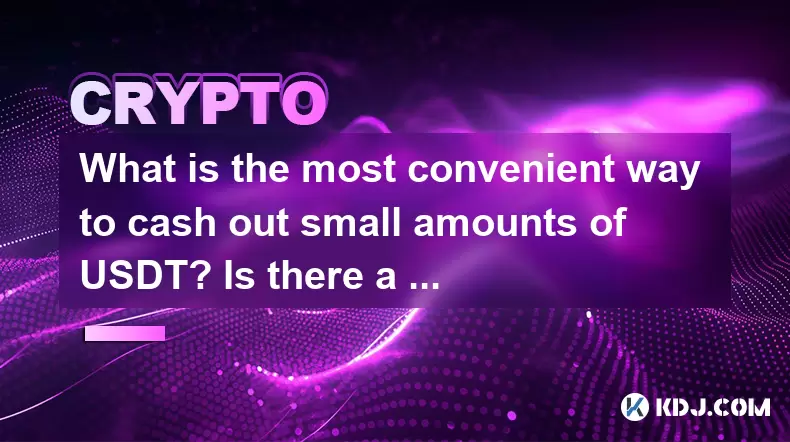
What is the most convenient way to cash out small amounts of USDT? Is there a shortcut?
Jun 11,2025 at 11:00pm
Understanding the Need to Cash Out Small USDT AmountsCashing out small amounts of USDT can be a challenge for many crypto users. Traditional methods o...
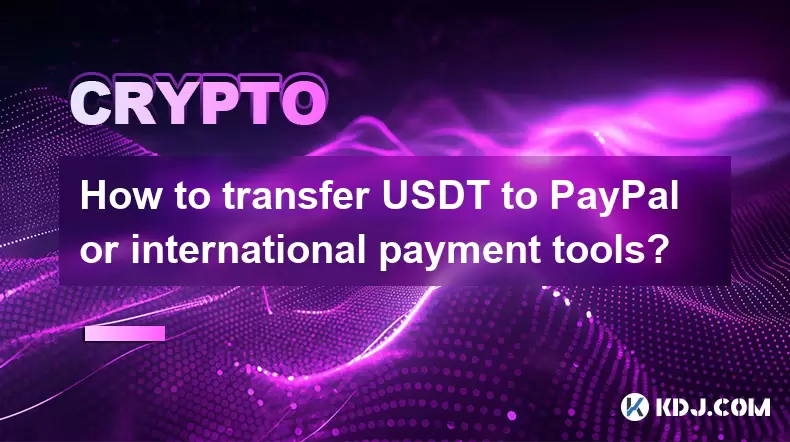
How to transfer USDT to PayPal or international payment tools?
Jun 15,2025 at 05:28am
Understanding the Basics of USDT and PayPal IntegrationUSDT (Tether) is a stablecoin pegged to the US dollar, offering blockchain-based value transfer...
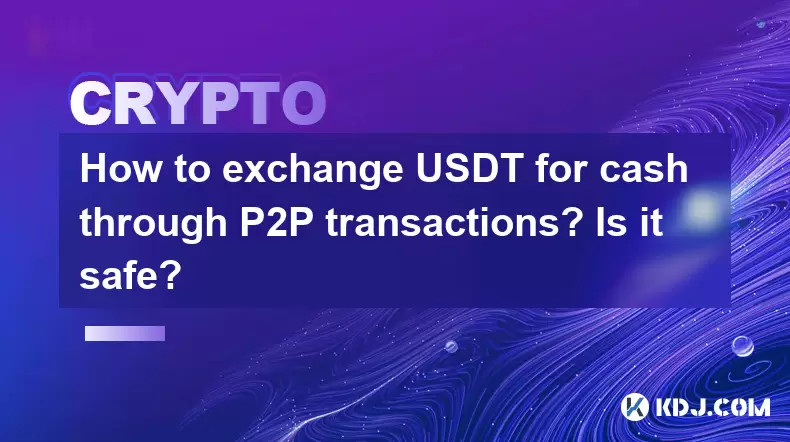
How to exchange USDT for cash through P2P transactions? Is it safe?
Jun 18,2025 at 07:56am
Understanding USDT and P2P TransactionsTether (USDT) is a stablecoin pegged to the value of the US dollar, making it a popular choice for users who wa...
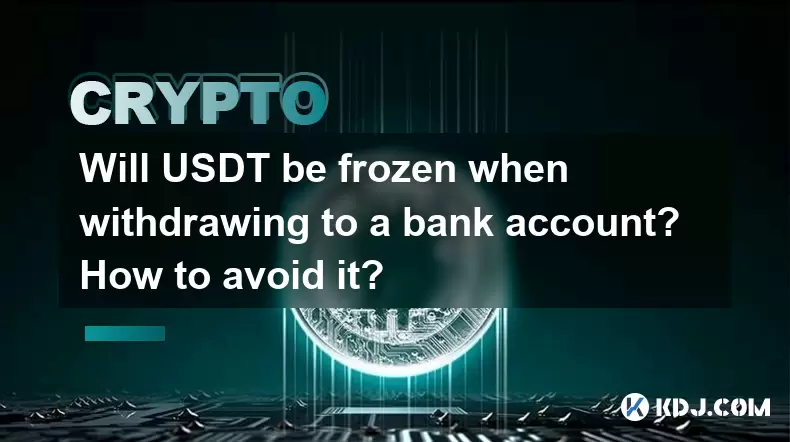
Will USDT be frozen when withdrawing to a bank account? How to avoid it?
Jun 15,2025 at 10:03am
Understanding USDT Withdrawals and Bank Account Freezing RisksWhen users decide to withdraw USDT (Tether) to a bank account, one of the most common co...
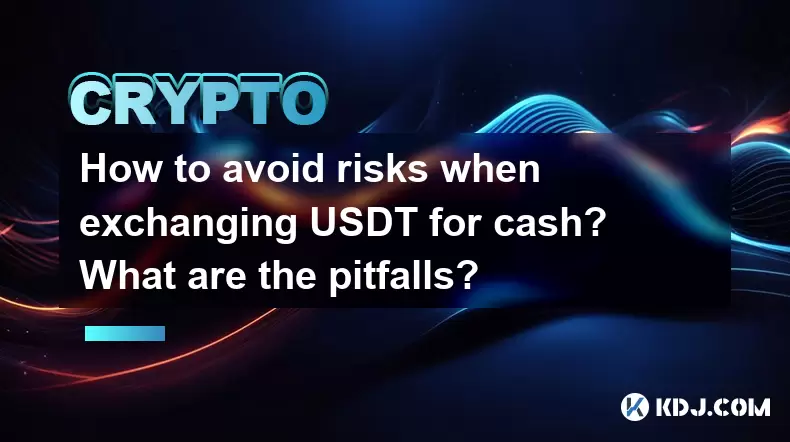
How to avoid risks when exchanging USDT for cash? What are the pitfalls?
Jun 11,2025 at 08:14pm
Understanding the Risks of Exchanging USDT for CashWhen exchanging USDT (Tether) for cash, users must be aware of the potential risks involved. As a s...

How to choose a reliable USDT exchange service provider? How to identify?
Jun 12,2025 at 03:15pm
Understanding the Role of USDT in Cryptocurrency TradingUSDT (Tether) is one of the most widely used stablecoins in the cryptocurrency market. It is d...

What is the most convenient way to cash out small amounts of USDT? Is there a shortcut?
Jun 11,2025 at 11:00pm
Understanding the Need to Cash Out Small USDT AmountsCashing out small amounts of USDT can be a challenge for many crypto users. Traditional methods o...

How to transfer USDT to PayPal or international payment tools?
Jun 15,2025 at 05:28am
Understanding the Basics of USDT and PayPal IntegrationUSDT (Tether) is a stablecoin pegged to the US dollar, offering blockchain-based value transfer...

How to exchange USDT for cash through P2P transactions? Is it safe?
Jun 18,2025 at 07:56am
Understanding USDT and P2P TransactionsTether (USDT) is a stablecoin pegged to the value of the US dollar, making it a popular choice for users who wa...

Will USDT be frozen when withdrawing to a bank account? How to avoid it?
Jun 15,2025 at 10:03am
Understanding USDT Withdrawals and Bank Account Freezing RisksWhen users decide to withdraw USDT (Tether) to a bank account, one of the most common co...

How to avoid risks when exchanging USDT for cash? What are the pitfalls?
Jun 11,2025 at 08:14pm
Understanding the Risks of Exchanging USDT for CashWhen exchanging USDT (Tether) for cash, users must be aware of the potential risks involved. As a s...
See all articles

























































































